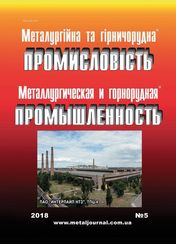Behavior of Alloying Elements during Electro-Slag Remelting of Ultrahigh Strength Steel |
Behavior of Alloying Elements during Electro-Slag Remelting of Ultrahigh Strength Steel ![]() Full text
Full text
T.R. Bandyopadhyay1, P.K. Rao1, N. Prabhu2
1Metallurgical Engineering, National Institute of Technology
2 Indian Institute of Technology
UDC 669.187
Metall. Min. Ind., 2012, Vol. 4, No. 1, pp. 6-16
Abstract
The paper deals with the behavior of principal constituents of an ultrahigh strength steels during ESR. The multiple analyses show no significant variation in the concentrations of silicon, manganese, vanadium, molybdenum, sulphur and phosphorus while concentrations of carbon, chromium, aluminium and titanium in the ESR ingot are found to be within the range of ± 0.01, ± 0.12, ± 0.008 and ± 0.01% respectively. Silicon and manganese show a loss of 0-55 and 2-13% respectively whereas the degree of desulphurization is in the range of 0 (in Ar shield) to 52 (in air). The lower carbon and chromium content of the electrode than the aimed value can be corrected by adding ferrochromium in-situ during ESR. The recovery of carbon from FeCr was nearly 100% in most of the melts while the recovery of chromium varied over a fairly wide range. The distributions of carbon and chromium are also uniform along the height and width of ESR ingots. The recovery of the inoculant titanium was relatively low at the bottom of the ingot and it increases with height and reached a constant value above 100-150 mm height. For the same addition of titanium, its recovery decreases during ESR with argon shielding.
Keywords: ELECTROSLAG REMELTING, ULTRAHIGH STRENGTH STEEL, VARIATION IN ALLOY CONCENTRATIONS, RECOVERY, RESIDUAL INOCULANT.
